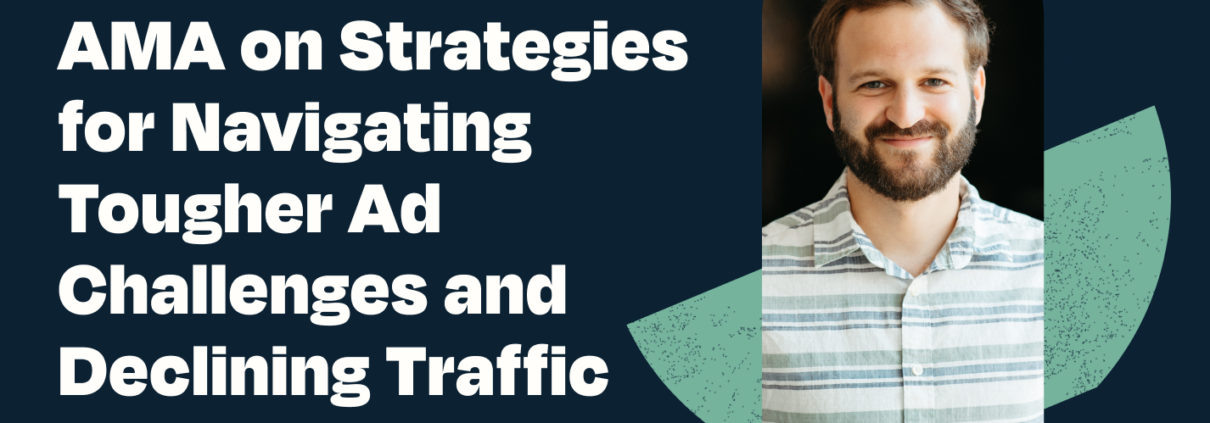AMA on Strategies for Navigating Tougher Ad Challenges and Declining Traffic with Chris Alarcon, Head of Media at Tuff
Chris has been leading the charge on our paid media team and strategies at Tuff for the past 4 years. He’s our go-to for everything from search to social media and brand performance. He’s always exploring, testing, and pushing us forward.
Chris keeps a close eye on nearly every ad account we handle daily. He’s a trend-spotting ninja, using data and the latest tools to help us spend smarter.
In the following discussion, Chris shares insights into how the ad landscape is changing in today’s AI and data-driven environment, and what it means for brands that rely on paid advertising to grow.
Let’s jump right in!
First off, search engines are answering people’s questions directly on the SERP and driving less traffic to websites. What does that mean for brands? Have you seen any clients starting to get less traffic because of this or traffic getting more expensive?
Alright, let’s break it down. I see this as a two-part answer. First off, there’s something important to consider for brands that heavily rely on organic traffic as a big chunk of their overall traffic mix.
With search engines getting better at answering questions right there on the search results page, without users needing to click through to a website, brands might already be noticing a dip in their organic traffic, and that trend could continue.
Take Google, for instance. They’re already pulling in organic listings into their AI-generated answers.
So, here’s the thing: if brands can see this as an opportunity and tweak their content strategy to aim for those answers and placements, it could work in their favor.
Now, when it comes to paid advertising, especially on the big search engines like Google, I don’t think they’re keen on losing out on a chunk of their revenue. So, I wouldn’t be surprised if we start seeing ads popping up directly in those generated answers sooner rather than later. Brands better be prepared for that.
In the meantime, brace yourselves for more competition, especially from those sites scrambling to replace their lost organic traffic. They might ramp up their paid search efforts to make up for it, which could drive up the cost-per-click.
I think it won’t be long before we start seeing ads integrated into various AI features that Google rolls out, as they try to cash in on that aspect.
It feels like ads are getting more and more competitive as everyone tries to make up for the decline of organic traffic. How does that impact how you think about media strategy?
With paid ads on search becoming more competitive, brands are scrambling to make up for the drop in organic traffic. What this means is, in the big picture of media strategy, brands should brace themselves for higher costs per click (CPC). This trend isn’t new; even before AI, we’ve been seeing prices climb across the board on Google Ads.
As brands pivot from relying heavily on organic traffic to fighting for attention in the paid realm, it’s a battleground out there, and that means higher CPCs. So, if you’re a brand leaning heavily on paid search, now’s not the time to put all your eggs in one basket. It’s crucial to diversify and explore other channels. If you haven’t dipped your toes into other avenues outside of paid search yet, now’s the perfect time to start.
As a media planner or manager, you’ve got to be more strategic than ever. Think smart about the keywords you’re targeting, constantly tweak your spending to minimize waste (which is extra important with those soaring CPCs), and broaden your horizons beyond direct-response channels.
Sure, platforms like YouTube and social media might not give you the same instant gratification as search ads, but they can help you cast a wider net and build your brand presence without breaking the bank.
Remember, each channel has its own goals and strengths. So, when you’re divvying up your marketing budget, keep in mind that search CPCs are climbing, and start exploring where else you can find success with your media budget. It’s all about finding those pockets of opportunity and testing them out.
Social media platforms are slowly moving from a social graph to an interest graph and giving a lot of impressions only to a small fraction of posts. What does that mean for brands?
Brands who see this change as an opportunity, rather than a threat, are the ones who are going to thrive. And hey, we’re already witnessing it across various industries.
Now, from a paid social perspective, targeting based on interests isn’t exactly new, but what’s really making waves is how this is impacting organic reach. We all know organic social has been a tough nut to crack, but with the interest graph taking center stage across platforms, there’s never been a better time to grow your social presence organically if you play your cards right.
Brands need to go all in on their content and creativity. Partnering with the right creatives and influencers can help them connect with their ideal audience and snag those prime algorithmic feed spots.
The key here is to be crystal clear about your message and the vibe you want to convey. Whether it’s making a killer first impression or reinforcing your brand values, partnerships play a huge role. Take Duolingo, for example, with their influencer collaborations popping up in my interest graph. These strategies have been a game-changer for brands looking to boost their social presence.
It’s like we’re entering a new era of organic growth on social media. It’s always been a tough nut to crack, with brands resorting to giveaways or contests aimed at their existing followers. But now, with algorithms putting interests first, it’s prime time to create killer content that sparks engagement and interaction. That’s where the real magic happens on the interest graph.
If you’re keen on keeping up with Chris, feel free to connect with him on LinkedIn right here. And if you’d like Chris’ team to take a look at your accounts and whip up a personalized recommendation to help you reach your growth goals for the year, just shoot us an email at [email protected]! We’re here to help.

Ellen is the founder at Tuff and one of the team’s core growth marketers. She is a versatile marketer with expertise in multiple channels – from ppc to seo to email to others – responsible for the experiments and testing. She is happiest when she’s on the ski hill or outside pointing her mountain bike downhill.





